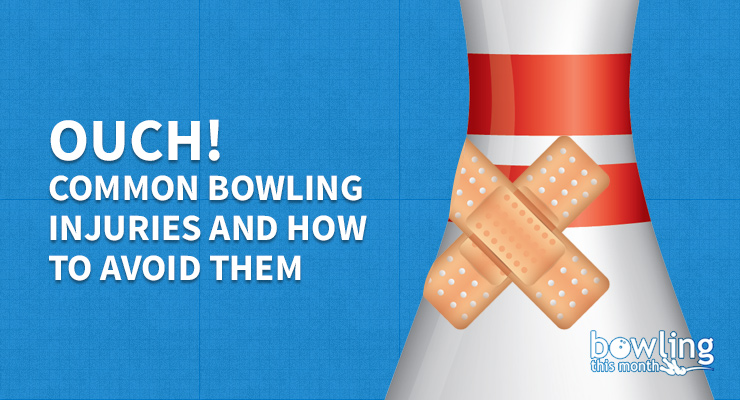If you utter the words “bowling injuries” to a non-bowler, don’t be surprised to see a look of amusement or total disbelief staring back. At the very least, expect a laugh and some eye-rolling. For someone who doesn’t bowl, or who bowls only on a casual, recreational basis, the idea of a bowling injury probably conjures thoughts of someone getting his thumb stuck in a beer bottle.
I ran into two real problems when writing this article. One is that I don’t have enough space to discuss the literally dozens of ways bowling can cause injury. The other is that I can only offer general observations and advice because the repairing of injured bodies is a personal matter: what works for one person may not work for another. I also want to add that the word “injury” can be a bit misleading because it implies some sort of sudden trauma, but that isn’t always the case. In this article, I use the word somewhat broadly to cover a variety of aches, pains, and—yes—injuries.
Many types of bowling injuries have the words “see a doctor” written all over them. These are the ones that are frequently caused by repetitive motions—such as swinging and/or rolling a bowling ball—and can include tendonitis, torn rotator cuff, back pain, and sore quadriceps. All of these are real and painful, but what I’ll discuss here are some of the much more common problems. Most can usually be prevented, while a few are what I call “passive,” in that the bowler is actually a victim of someone else’s actions.
Injuries caused by sticking on the approach
I’ve put this passive injury at the top of my list because I think it has the most potential to really hurt someone.
Weather—heat, humidity, rain, indoor and outdoor temperatures—can all affect a bowler’s ability to slide safely, especially on today’s synthetic approaches. Add certain “foreign substances” to the mix—more on these shortly—and the odds against injury shorten.
Probably the most common approach problem results from sticking at the foul line: you glide up to the line, but instead of sliding you come to a screaming, abrupt stop. Maybe your foot comes into contact with a ...
This article is only available to Bowling This Month subscribers. Click below to get instant access to this article and all of our other premium instructional content.
Subscribe to Bowling This Month
Already a Bowling This Month subscriber? Click here to log in.
